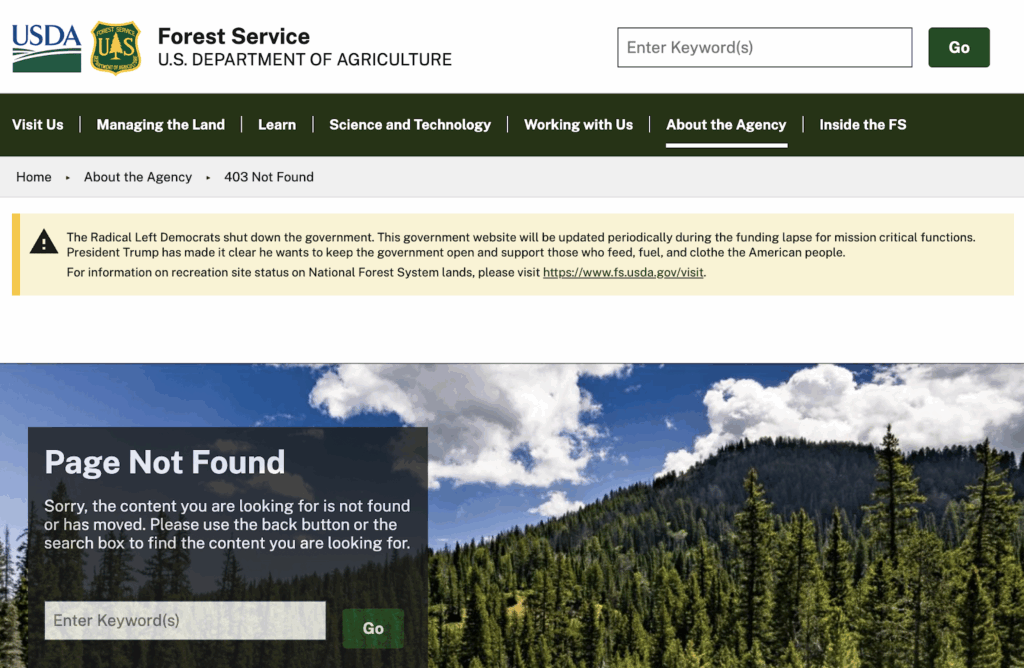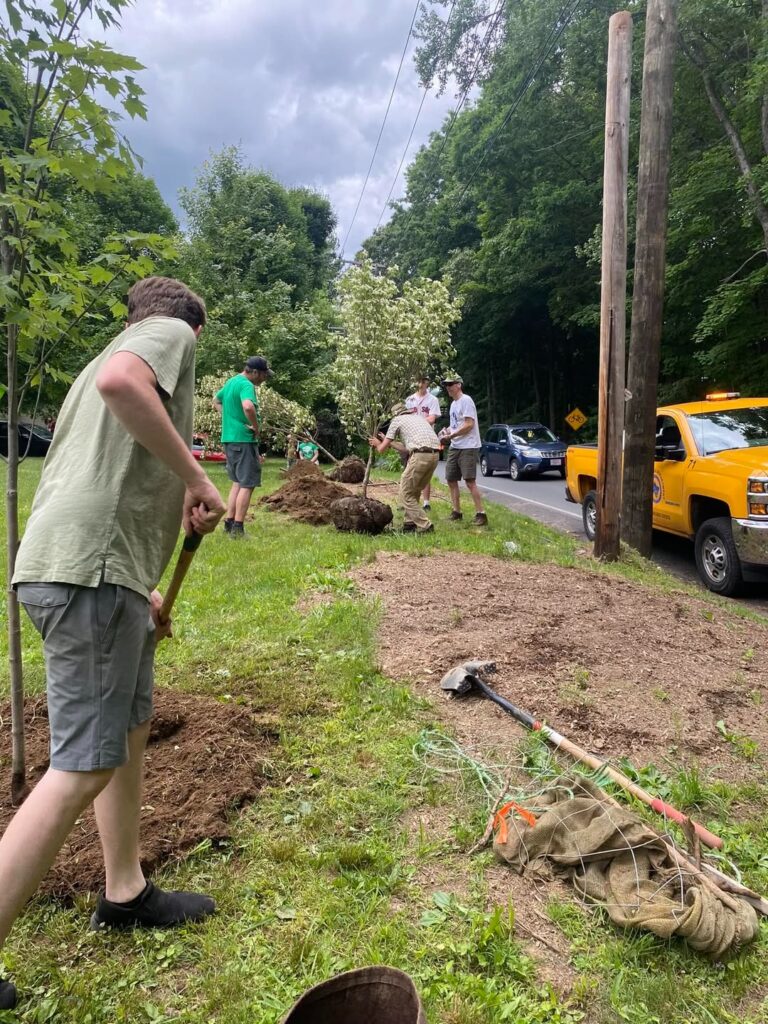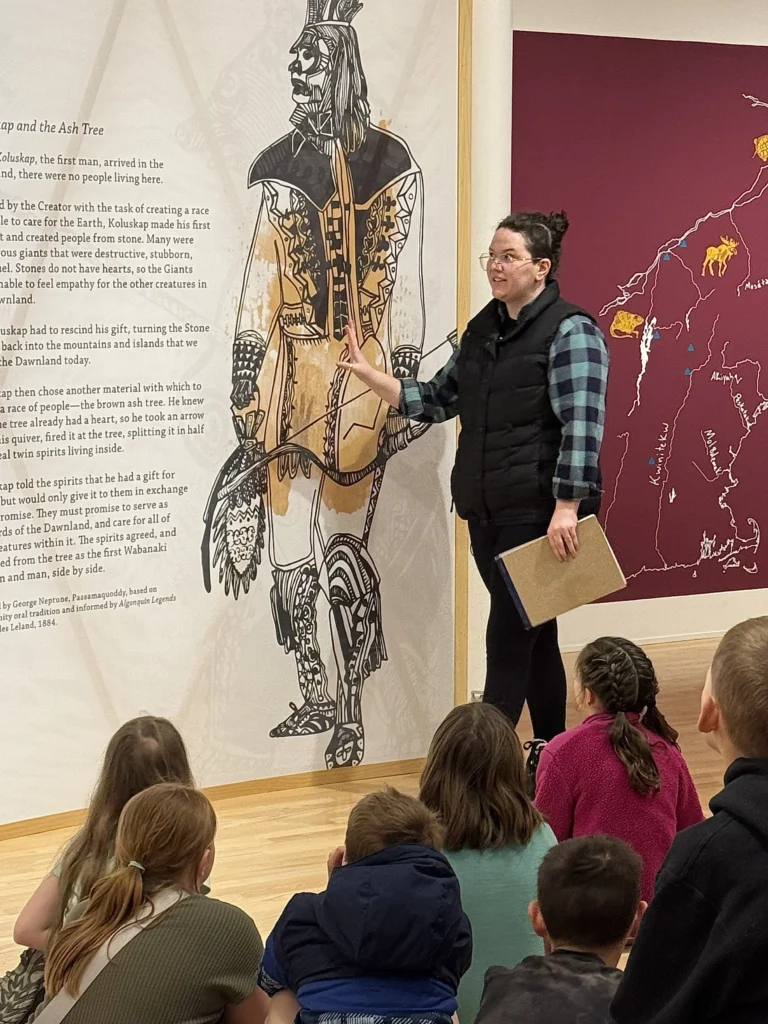By Hetty Startup
This is the second installment of View on Views, a series of 10 columns about landscaping in Amherst. Read the first part here. This time I want to highlight trees as a key design element and the work of the city's Public Shade Tree Committee, which is helping to create a greener, cooler and more beautiful city for all of us. In a warming world, places like Amherst can be an oasis where city residents creatively add more shade to mitigate the damage of so-called “heat island effects.” These are places that have warmed more than surrounding rural areas and where air conditioners, furnaces and heat from vehicles tend to trap heat more concentratedly in places like downtown. A good example of a place achieving this improvement is Sweetzer Park.
It is the mission of the Amherst Public Shade Tree Committee (ASPTC) to preserve and protect the city's trees and to ensure that there is shelter in the form of tree canopy that can help lower temperatures, improve air quality, reduce our energy consumption, and improve both the physical and mental health of our neighbors and fellow residents. I was hoping for a link Indy Readers should contact the US Forest Service for more information on this exact topic, but the Forest Service website is currently unavailable due to the government shutdown.

The Amherst Shade Tree Committee
Our Shade Tree Committee advocates for specific design standards as applied to trees and our cityscape. This is clear in this quote from the Amherst Bulletin last January:
The Amherst Public Shade Tree Committee wishes to express our belief that Amherst must create zoning regulations that promote…preserve space for trees and pedestrians[ing] sufficient front area for old trees in inner cities and village centers. When buildings are too close to streets – as seen downtown with the apartment complexes on Triangle Street and Spring Street – it creates a harsh and unwelcoming environment. Public sidewalks are squeezed against tall buildings and there is not enough land to plant mature shade trees. Even if trees and shrubs are planted, they may not survive where there is not enough space.
We want Amherst to continue to be a warm, welcoming environment for everyone. That's why we're calling on the city to ensure that all future buildings have tree-lined streets and wide, comfortable sidewalks. It is well documented that urban spaces with abundant trees are cooler, quieter and more inviting. Trees tend to provide cleaner air and reduce traffic noise. People are more likely to walk, shop and spend time in tree canopy areas. We hope Amherst will maintain this environment. Trees, shrubs and plants, especially native ones, also help feed birds, butterflies, bees and other pollinator species that are critical to a healthy ecosystem. They often serve as important protection against floods.
The APSTC is a volunteer committee (similar to other commissions and committees in our city) and is overseen by Alan Snow, the city's tree warden. So when residents or officials and the city request changes to plans, designs or architectural plans, the tree warden can play a large role (e.g. in the city's recently completed community project), but the APSTC can also play a very important role. Other organizations can play a critical role in shaping Amherst’s “greener” appearance. The Indy myself has been a voice in these discussions and has several people who are more knowledgeable about assessment than I am. Instead, I want to document what the committee has done over the last few years to create more shade in our city and also create nicer edges for sidewalks and streets in our neighborhood. In June 2024, they planted trees on Stanley Street as well as Northampton Road and Snell Street.

In September 2024, a similar group planted trees on Gatehouse Road in the Echo Hill neighborhood. And in May of this year, more trees appeared on West Street. In February, on Tu Bishvat (Jewish New Year for Trees), the committee pledged to plant trees every other Saturday. The tradition is experienced differently depending on where you live in the world, but sometimes there is a special Seder where a family tastes a new fruit or plans to plant a tree. Observers also show appreciation for all that trees do for us.
The committee's work was represented by tree warden Alan Snow at a recent Cuppa Joe with City Manager Paul Bockelman. Snow also works closely with the city's Department of Public Works (DPW) and was instrumental in the redevelopment of the North Town Common. In connection with this project, members of the committee were busy planting the new gardens in front of the town hall in April 2024 (so that they will look well established this year). In September, they were found planting trees at Farmington Road and PondView Drive (in the Orchard Valley neighborhood). And a few weeks ago they planted three trees on the Town Common and more along Amity Street.
In the decades since the Amherst Shade Tree Committee was founded in 1977, there have been some long-time members like Henry Lappen (who also juggles for a living) and local authors like Britt Crow-Miller, who writes children's books about trees and nature in general. I think of her book, Thank you, old oak. On behalf of the city (that's us), the APSTC runs a tree nursery where planting sessions are also offered. These usually take place in November, before the snow flies or before a series of killing frosts.
The Shade Tree Committee also helps spread the word about the value of trees by sponsoring talks or connecting its followers to talks organized by other organizations. Last year, the Amherst Historical Society's History Bites program offered an event about the Old Grove at UMass that took the form of a lecture and a walk through the grove near Orchard Hill.[[[[
The committee acts as a resource for sharing information about what to do with fallen leaves, how to prune them and how to deal with the effects of Western Mass droughts like this year's. They are at the top of relevant books or TV shows related to trees. In addition to APSTC's regular and special events, the committee provides advice on how to rid trees of invasive vines or how to protect the city's and residents' trees from the effects of climate change. On their social media page they express their concerns and fears about lantern bug infestations and the control of the emerald ash borer.
The Emerald Ash Borer Problem
This beetle is an invasive insect that migrated from Asia about twenty years ago. It has caused massive destruction of ash trees throughout North America, and the spread of the problem was found to have been accelerated by the transportation of infected firewood and/or logs.
As experts explain in this link, “Adult beetles lay their eggs on the tree's bark, and the hatching larvae bore into the tree to feed on the inner bark. As the larvae feed, they form “S”-shaped galleries that eventually enclose the tree, effectively killing the tree from the inside out.” Staying specifically on the topic of ash trees, I was reminded that this tree has special significance to the “Dawn People” (the Wabanaki), who view its value in cultural, spiritual, and economic ways. I remember learning about the making of brown ash baskets by local tribes at the Abbe Museum on Mount Desert Island in Maine, and that the tree plays a key role in Eastern Wabanaki creation myths. These include the Passamaquoddy, Penobscot, Mailiseet and Mi'kmaq nations located in Maine

Trees are important not just because of their shade – they are also the basis of our existence.
Thanks to the APSTC committee, I found my way to other programs from related non-profit or government organizations, such as regular guided hikes called the Tree Trek program in the Mt. Holyoke Range. In past years, the committee has helped the city celebrate Arbor Day and Earth Day. Instead of the usual workday on the second Saturday of the month in August, it has become a tradition to host a summer potluck, usually outdoors. The committee members, their families, friends and neighbors also attend the annual community sustainability festival, as it was at one of these events that I first met members of the committee and heard more about their work. They are often looking for more people to help with the planting work.
More information here
Public Shade Tree FAQs
The Shade Tree Committee sources its trees from a variety of sources, including Amherst Nurseries and Sugarloaf Gardens. If you are attending a planting, you are asked to bring gloves and shovels if you have them. The committee meets on the second Tuesday of each month and welcomes members of the public. The meetings take place virtually and you can easily join them via this link.
Maybe you have your own favorite shady spot in Amherst? Share it in the comment section.
